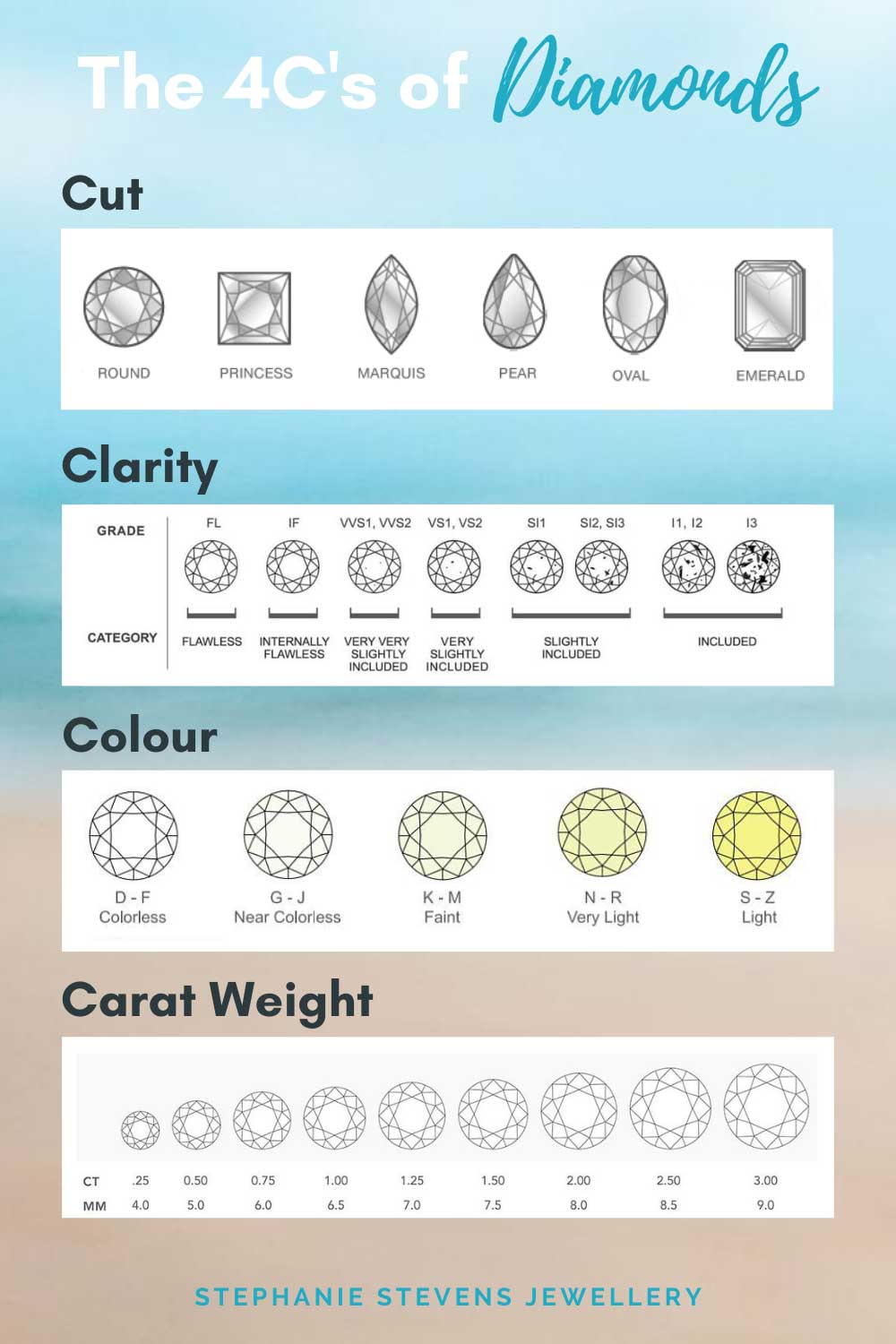The perfect blog that explains everything you need to know about choosing a diamond.
When buying a diamond, you want to ensure that you get the best quality for your budget. It can all seem rather overwhelming but knowing a little about how a diamond is graded can help massively when choosing the perfect diamond for your loved one. This is where the 4 Cs come into play, a universal method of grading a diamond.
When you first start looking into buying a diamond it can be rather overwhelming, it is not quite as simple as finding one that looks nice. With a diamond, quality is everything, and there are traditionally four main characteristics that decide on the quality of the diamond, these are referred to as ‘The 4 Cs of Diamonds’.
This guide will hopefully help with the understanding of these four components and ultimately help you to choose the perfect diamond for you or your loved one.
Cut:
Ultimately the most important factor is choosing the cut, this specifically refers to how the sides and angles have been cut and determines the depth and shape of the diamond. The cut can turn a dull diamond into one that truly sparkles by allowing maximum light to penetrate the stone, and vice versa. There are multiple different cuts available and it all comes down to personal preference, the most popular are Round, Princess, Emerald, Pear Marquise and Oval.
Colour:
Diamonds are graded by colour from D-Z, D having less colour, and Z having some noticeable yellow or brown tints, in some cases the colour difference between two different gradings could be impossible to notice with the naked eye but the price may well differ drastically. It’s also worth remembering about the intended setting for the stone and ensuring the stone still has the desired affect once in its setting. As mentioned in the ‘Cut’ section above, it is important to remember that the sparkle of the diamond comes from the cut, not necessarily just the colour.
Clarity:
A diamond’s clarity rating refers to any blemishes or imperfections that the stone may have. Some diamonds may appear flawless to the naked eye but may well contain internal blemishes that can only be seen with a magnifying glass, but these can still alter how the light reflects in the diamond. It is often worth conferring with an expert on the clarity of a diamond as they will be able to help you decide whether a diamond is good value.
Carat:
This is often confused to be the overall size of the diamond, but it is in fact the weight of it, a 1 carat round cut diamond will weigh approximately 200 milligrams and will be approximately 6.5mm. This is the least important of the 4C’s so remember not to just go for a large diamond as a high quality cut and the shine of a smaller diamond will always look better than a larger dull diamond.
The 4C’s work together to help determine the overall quality of a diamond and when carefully considered can help you choose the perfect diamond for you.
Here is a visual guide to help you when looking for your diamond.

Something a Little More Special
If you want a really high quality of diamond and are a lover of the sea, then Ocean Diamonds use an 8C’s approach to grading their diamond quality, the traditional 4C’s as mentioned above but also the additional four components below. These are a new category of diamond and are handpicked by professional divers off the coast of Namibia and South Africa.
Coastal Origin
Ocean diamonds started their journey to the sea billions of years ago. The torrent and flow of powerful rivers liberated nature’s precious stones from inland, ushering them to their resting place within the seabed.
Conscience
Every diamond is handpicked by their professional divers, leaving minimal trace on the environment. On a select few days of the month, courageous divers venture out to discover precious gems lodged between gullies or hidden on the seabed.
Certification
Their signed Certificate of Provenance delivers confidence that your diamond was sourced from the ocean. Each diamond carries a laser mark to guarantee ocean origin alongside GIA status.
Craftsmanship
They only collaborate with carefully selected jewellery designers who preserve and accentuate the natural brilliance of ocean diamonds, and we are happy to be able one of their selected designers.
Hopefully this has all been very helpful and you now have a little more knowledge on the complicated world of diamonds. If you would like to see some samples of the diamonds we have worked with in the past and would like to discuss what diamond would be best for you then please feel free to get in contact.







